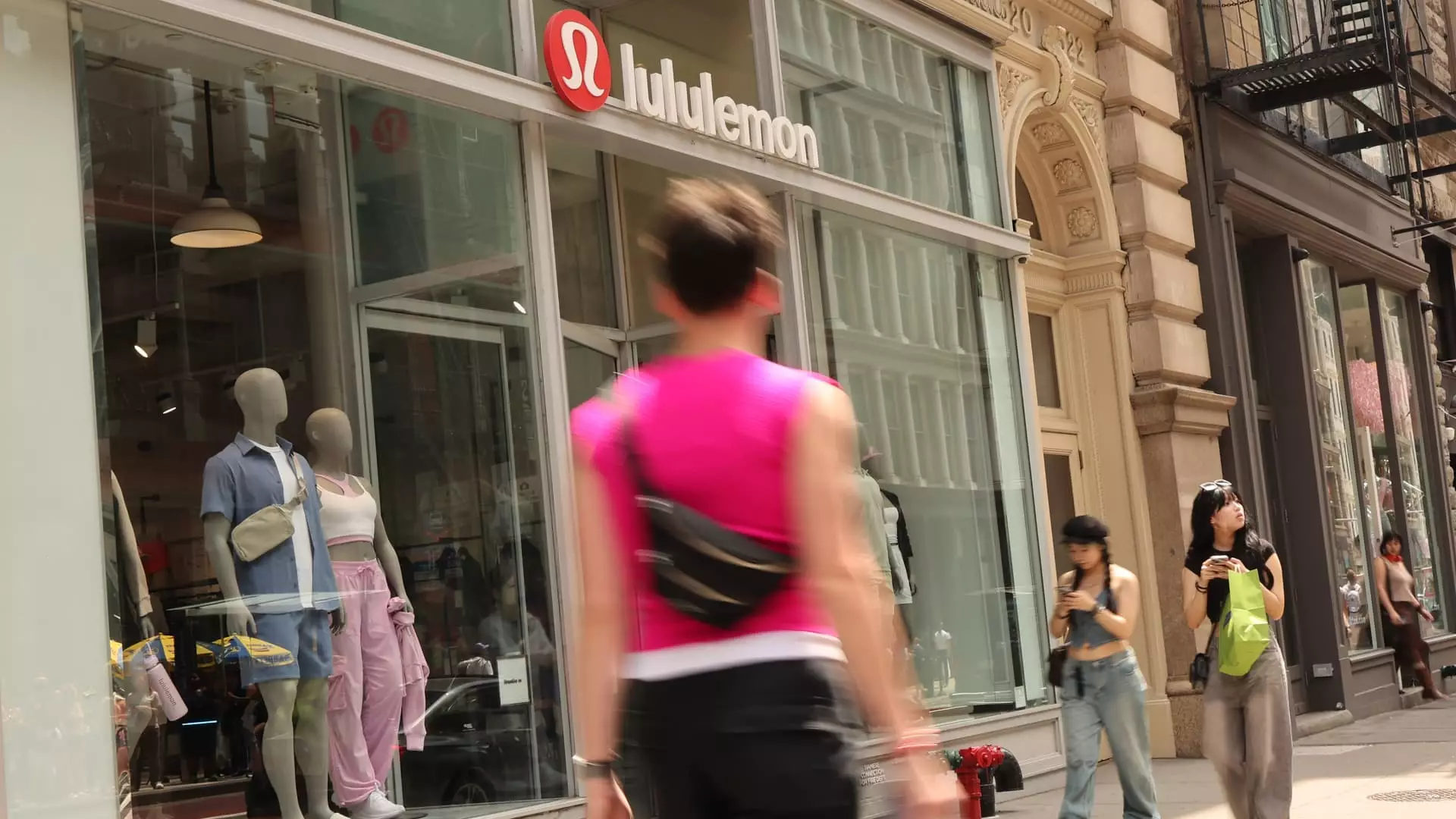Lululemon Athletica, the Canadian athletic apparel giant renowned for its trendy leggings and yoga wear, recently reported fiscal first-quarter earnings that, at first glance, indicated a success with a slight beat on earnings per share and revenue expectations. But a deeper look paints a troubling picture that should alarm investors. While the numbers from the quarter ending May 4 showed earnings per share at $2.60, marginally surpassing the anticipated $2.58, and revenue hitting $2.37 billion—just ahead of the forecasted $2.36 billion—these metrics are buried beneath a toxic blend of economic concerns that the company has chosen to downplay.
CEO Calvin McDonald described the company’s position with bravado, stating their intention to “leverage our strong financial position and competitive advantages.” However, such proclamations feel more like hollow reassurances than realist insights into the dire realities facing the brand. The company’s decision to cut its full-year earnings guidance blindsides investors, with new projections suggesting earnings per share will fall between $14.58 to $14.78, down from a previously more optimistic forecast of $14.95 to $15.15. This revision not only reflects an environment hindered by tariffs and an economic slowdown but also raises questions about the long-term viability of Lululemon’s market strategies in an increasingly volatile retail sector.
The Tariff Impact: A Shifting Landscape
The issue isn’t merely profitability; it’s the growing pressure from tariffs imposed under the previous administration’s unpredictable trade policies. Lululemon isn’t isolated in this struggle; many other retailers, including the likes of Abercrombie & Fitch and Macy’s, have slashed their profit outlooks or abandoned them altogether due to the looming tariffs. Gap, which owns the Athleta brand, has made waves by projecting significant financial impacts ranging from $100 million to $150 million because of tariffs. Nike, too, has hinted at price hikes affecting their product lineup—evidence that suggests an industry in turmoil.
McDonald’s optimism seems ill-placed when even the giants are feeling the pinch. The reality is, Lululemon, like most U.S. retailers, relies heavily on overseas manufacturing, with substantial percentages of its products produced in countries notably affected by tariffs. This places them in a particularly precarious position—academic exercises on financial resiliency can only go so far when the costs of production are spiraling upward.
Market Responses: Panic Signals or Needed Retracement?
Market reactions tell their own story. Following the announcement, Lululemon shares dove nearly 20% in after-hours trading, a strong indicator that investors fear the company’s chances in the near future. Given that the company has already seen a year-to-date stock drop of approximately 13%, it is clear that confidence in Lululemon’s long-term growth potential is wobbly at best. The lackluster comparable sales growth of just 1% year-over-year and the sharp contrasts between the company’s domestic and international performance—where the Americas are down by 2% while international sales grew by 6%—further underscore mounting pressures both at home and abroad.
As analysts’ projections for second-quarter revenue sit at around $2.56 billion, slightly above Lululemon’s own expectations, it begs the question: are analysts too optimistic, or does Lululemon’s conservative stance imply a more profound acknowledgment of ongoing challenges? A second-quarter earnings per share forecast between $2.85 and $2.90, falling significantly short of the $3.29 expectations from Wall Street, is yet another indicator that the firm is grappling with its positioning in a declining growth environment.
The Call to Action: A Need for Strategic Reassessment
In sum, Lululemon stands at a crossroads. The reality is a complex one, fraught with economic obstacles and market pressures that demand immediate strategic reassessment. For investors, there’s a clear takeaway: while Lululemon has maintained a reputation for strong brand loyalty and high-quality products, the collapse of optimism due to geopolitical forces and excessive optimism from leadership cannot be overlooked. The youth-centric brands competing in the growing athleisure market will undoubtedly pounce on any opportunity to capture customer spending, making it crucial for Lululemon to rethink its approach. The optimistic rhetoric of capitalizing on “growth opportunities” seems out of touch when balancing against the harsh truths posed by tariffs, competitive pressures, and an unpredictable macroeconomic landscape.

